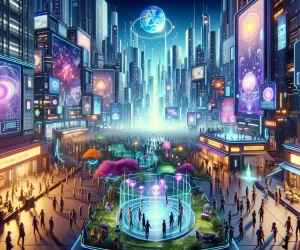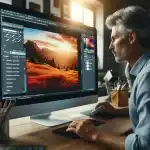
Embarking on the journey of wildlife photography can be as thrilling as it is challenging. With the right tips for wildlife photography, enthusiasts can transform their passion into stunning visual narratives. This guide delves into the essence of capturing the wild, offering both novices and seasoned photographers a treasure trove of knowledge to elevate their craft.
From mastering cam settings to understanding the subtle dance of light and shadow, each section is designed to guide you through the multifaceted world of nature photography, ensuring every click of the shutter brings you closer to the perfect shot.
Table of Contents
Understanding Wildlife Photography
Wildlife photography goes beyond the mere act of taking pictures of animals; it’s an art form that requires patience, skill, and a deep understanding of nature. Of all the different types of photography, this genre aims to capture the essence of nature in their natural habitat, portraying the beauty, brutality, and diversity of the animal kingdom. It’s a way to bring the audience closer to the natural world, offering a glimpse into the lives of creatures that are often hidden or overlooked.
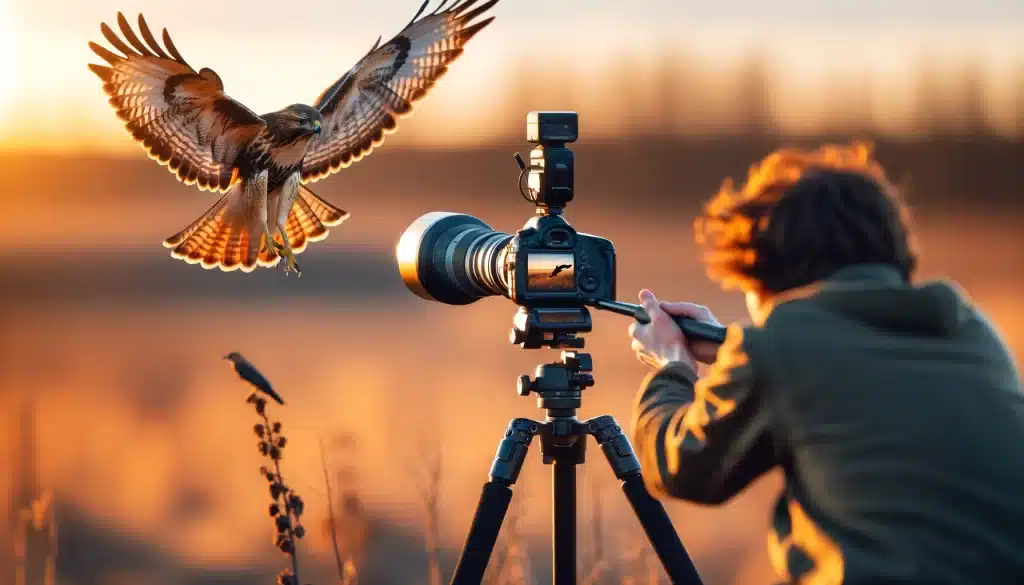
Key Principles and Ethics
The ethical considerations in wildlife photography are paramount. Photographers must respect the animals and their environment, avoiding any actions that could cause stress or harm. This includes maintaining a safe distance, using appropriate equipment like long lenses to minimize disturbance, and being mindful of the animal’s behavior and signs of distress.
Understanding Animal Behavior
A successful nature photographer is also an astute observer of nature. Understanding animal behavior is crucial for anticipating actions, predicting movements, and being at the right place at the right time. Knowledge of the habits, routines, and characteristics of different species can significantly increase the chances of capturing compelling and authentic images.
The Role of Conservation
Nature photography also plays a vital role in conservation efforts. By documenting the beauty of wildlife and the threats they face, photographers can raise awareness and inspire actions to protect these creatures and their habitats. The power of a single image can be instrumental in changing perceptions and fostering a deeper appreciation for the natural world.
Tips for Wildlife Photography: Essential Gear for Capturing Nature
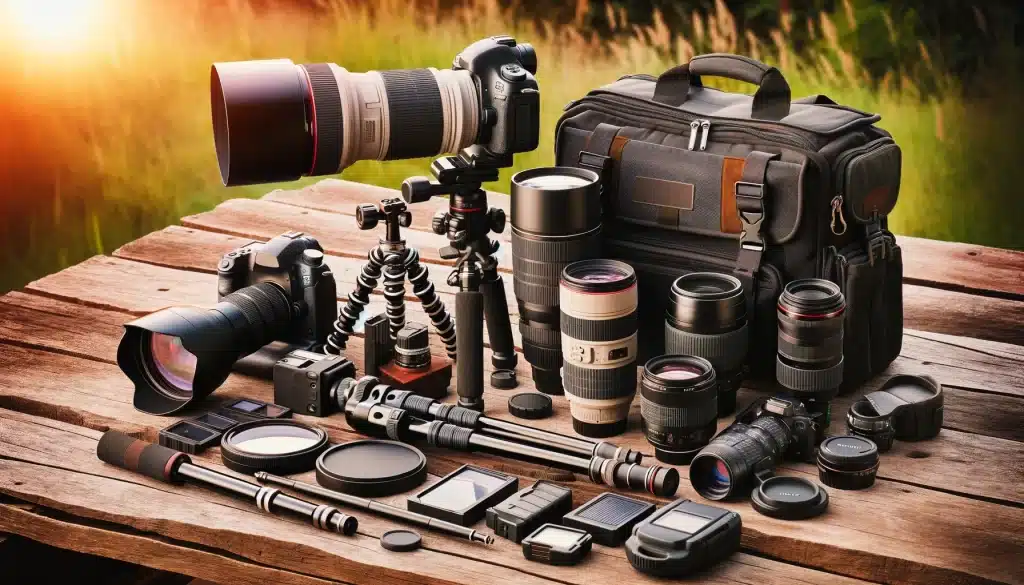
Camera Choices for Wildlife Photography
Selecting the right filming device is crucial for nature photography. DSLRs have been the traditional choice due to their optical viewfinders, which are beneficial for tracking moving animals. However, mirrorless cameras are also a viable option, offering high-quality electronic viewfinders (EVFs) and lighter weight. Key features to consider include a high number of autofocus points, fast continuous shooting speeds, and, for added reach, crop-sensor (APS-C) cameras are often preferred.
Lenses: The Eyes of Wildlife Photography
Lenses are the most critical tool in nature photography. Telephoto lenses are essential, with prime lenses like 600mm being known for sharpness. However, quality zoom lenses offer flexibility and can provide excellent results. A fast lens with a large aperture (f2.8, f4.0, or f5.6) is ideal for low light conditions. Modern lenses like Sony’s FE 200-600mm f/5.6-6.3 G OSS have gained popularity for their fast focus and effective stabilization .
Stability with Tripods and Monopods
Using a tripod or monopod can significantly enhance the quality of your shots, especially with heavy telephoto lenses. A sturdy yet lightweight tripod, preferably made of carbon fiber, can be a great asset. Monopods offer flexibility and ease of movement, making them suitable for nature photographers who need to change positions frequently.
Extending Reach with Teleconverters
Teleconverters are tools that increase the focal length of your lens, allowing you to capture distant subjects. While they can reduce the amount of light and sometimes affect image sharpness, they are invaluable for getting closer shots of nature without physically moving nearer.
Protecting Gear with Rain Covers
For nature photographers, dealing with varying weather conditions is part of the experience. Rain covers are essential for protecting your cam and lens from moisture, ensuring you can continue shooting regardless of the weather.
Enhancing Shots with Lighting Equipment
Lighting can dramatically impact the quality of wildlife photographs. Using flashlights or flash guns can illuminate subjects in low light conditions, while reflectors and fill cards help manage natural light and shadows during the day. Experimenting with various lighting tools can help achieve the desired effects in your images.
Storing Memories with Adequate Memory Cards
Fast and reliable memory cards are crucial for nature photography, especially when capturing high-resolution images or videos. Cards with fast write speeds are necessary to keep up with continuous shooting modes, ensuring you don’t miss any critical moments in the field.
These essential pieces of gear form the foundation of wildlife photography, enabling photographers to capture the beauty and diversity of wildlife effectively.
Mastering Camera Settings for Wildlife Photography
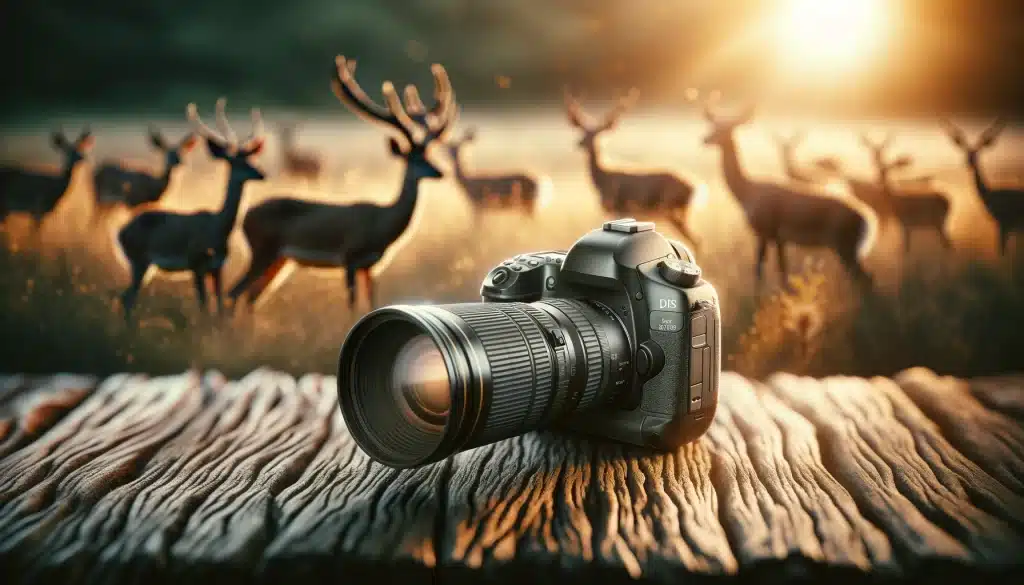
Optimal Shooting Modes
For wildlife photography, the optimal shooting mode often depends on the subject and conditions. Aperture priority mode is highly recommended as it allows quick adaptation to changing light conditions while maintaining control over depth of field. In low light, opening the aperture (e.g., f/2.8, f/4) and adjusting ISO as needed can maintain a fast shutter speed, essential for capturing sharp images of moving animals. Manual mode offers the most control, especially with Auto ISO, allowing the photographer to adjust shutter speed and aperture while the cam manages ISO.
Focus for Clarity
Continuous focusing (AF-C or AI Servo) is crucial for tracking moving subjects, keeping them sharp in the frame. Pre-focusing on anticipated action spots can save valuable time, ensuring you capture the moment with clarity. This setting is indispensable for wildlife photography, where subjects are rarely still and predictable.
Understanding Metering Modes
Metering modes are critical in achieving the right exposure for wildlife subjects. Spot metering is ideal for isolating subjects with significant backlight or when they differ in brightness from the background. Center-weighted metering is more flexible, suitable for subjects centrally placed in the frame, while matrix or evaluative metering is best for evenly lit scenes. The right metering mode ensures your subject is well-exposed, regardless of the background lighting conditions.
White Balance and Image Quality
Auto white balance is recommended for its ability to adapt to changing light conditions, maintaining color accuracy without the need for manual adjustments. This setting is especially useful in the dynamic environments of wildlife photography, where lighting can shift rapidly.
The Importance of RAW Format
Shooting in RAW format is advisable for the depth of detail and post-processing flexibility it offers. Unlike compressed formats like JPEG, RAW retains all image data from the sensor, allowing for extensive adjustments in exposure, white balance, and more in post-processing, without degrading image quality.
Tailored Camera Settings
Cam settings will vary based on the specific wildlife subject and the environmental conditions. For instance, birds in flight require fast shutter speeds (1/2000s or faster) and a moderate aperture (f/5.6–f/8) to ensure sharpness and detail. In contrast, static animals or those in low light may need different settings, emphasizing the necessity of understanding and adapting camera settings to each unique situation.
Achieving sharpness in wildlife photography is crucial to capture the intricate details and textures of animals in their natural habitat. Here’s how you can ensure your wildlife images are sharp and full of detail.
Tips for Wildlife Photography: Essential Equipment for Sharp Images
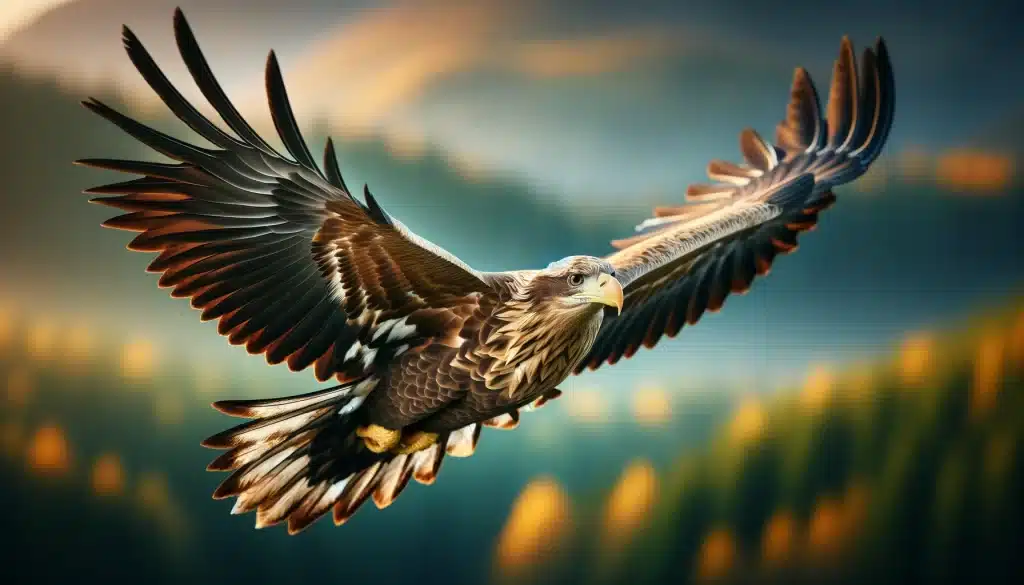
To get sharp wildlife images, start with the right equipment. A camera with fast and accurate autofocus and good low-light performance is vital. Invest in quality telephoto lenses with image stabilization to minimize cam shake. A sturdy tripod provides stability, especially when using heavy lenses or shooting in low light. The sensor size of your camera also impacts sharpness; full-frame sensors generally offer better low-light performance and detail capture than crop sensors.
Focus Techniques for Clarity
Mastering focus is pivotal. Use continuous autofocus (AI Servo for Canon, AF-C for Nikon) for moving subjects, and single-point autofocus for stationary subjects to achieve precise focus, especially on their eyes. Consider back button focus for separate focus control, allowing you to recompose without losing focus .
Environmental Factors and Camera Settings
Lighting and environmental conditions greatly affect image sharpness. Shoot during the golden hours for softer, more detailed light. Avoid harsh midday light which can flatten the image. Use a fast shutter speed to freeze motion, and don’t be afraid to increase the ISO if necessary to maintain sharpness in low light. In challenging conditions like heat distortion, try to get closer to the subject or shoot during cooler parts of the day .
Post-Processing for Enhanced Sharpness
Technical Proficiency and Patience
A combination of high-quality equipment, the right focus technique, optimal cam settings, and post-processing adjustments are essential for sharp wildlife images. However, the photographer’s skill in handling the equipment and patience in waiting for the right moment is equally crucial. Practice, patience, and a deep understanding of wildlife behavior will significantly enhance the sharpness and quality of your wildlife photographs.
Getting Started with Wildlife Photography
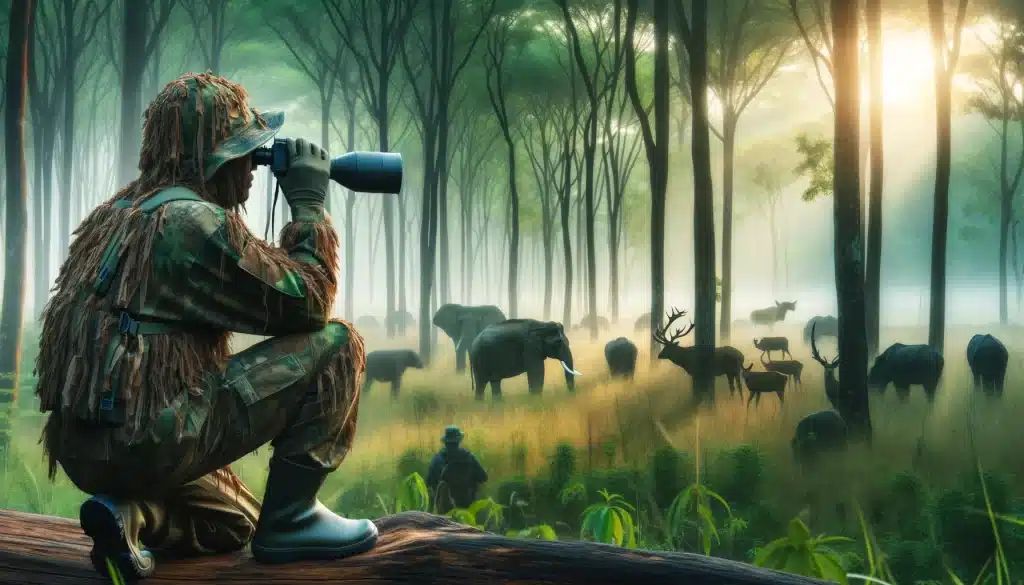
Choosing the Right Equipment
Invest in a quality telephoto lens, as this will be your primary tool for capturing distant wildlife. While lenses with long focal lengths (500mm or 600mm) are common in wildlife photography, don’t overlook the creative potential of macro lenses or wide-angle lenses.
Learn more about the best equipment for wildlife photography!
These can provide unique perspectives and allow you to capture the animal’s environment.
Learning About Your Subject
Researching and understanding the behavior of the wildlife you aim to photograph is crucial. This knowledge can help you anticipate their actions and be ready to capture the right moment. Observing animals and learning their patterns will improve your ability to get compelling shots.
You can watch documentaries of Nat Geo shows to know more about the animals and their way of living.
Developing Fieldcraft Skills
Good fieldcraft means moving quietly and respectfully in nature to minimize disturbance to wildlife. Improving these skills will increase your chances of getting closer to animals without scaring them away. Ethical practices should be at the heart of your approach to ensure the welfare of the wildlife and the authenticity of your photographs.
Experimenting with Composition
Experiment with different compositions to make your photos stand out. The rule of thirds is a fundamental principle that can help balance your images and create a more engaging composition. Don’t be afraid to vary your approach, from close-up portraits to wide shots that include the animal’s habitat.
Post-Processing Techniques
Shooting in RAW format allows for greater flexibility in post-processing. You’ll have more control over adjustments like exposure, contrast, and color correction, which can make a significant difference in the final quality of your images. Learning to edit your photos effectively can help enhance the sharpness and detail captured in the field.
Frequently Asked Questions
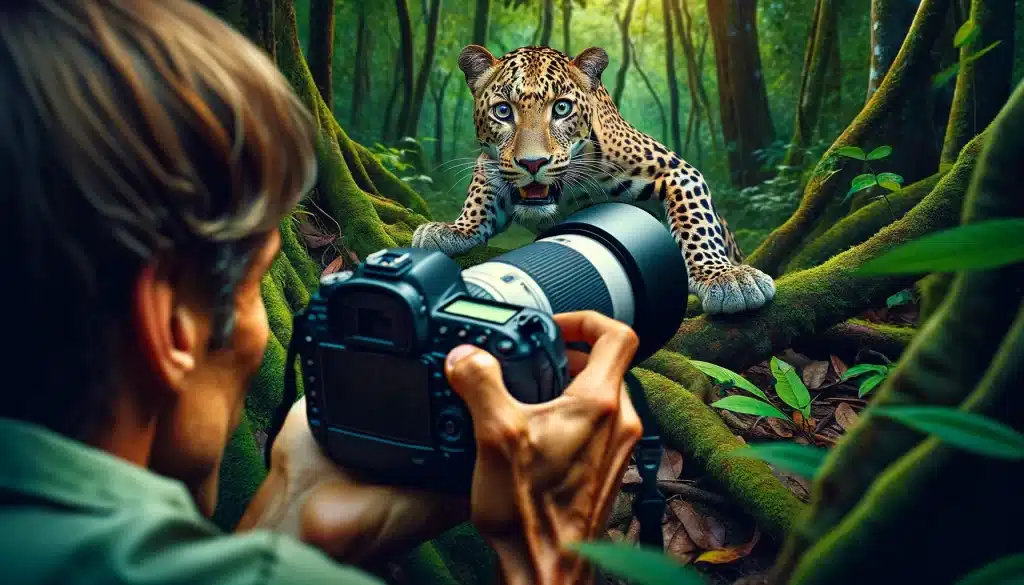
What is the best setting for wildlife photography?
The optimal settings depend on your subject and the lighting conditions. Generally, use a fast shutter speed (1/1000s for moving subjects, faster for birds in flight) to freeze motion, a suitable aperture (f/4 to f/8) to ensure sufficient depth of field, and adjust the ISO as needed to balance exposure and minimize noise. Continuous autofocus (AF-C) is recommended to track moving subjects efficiently.
How do you get sharp wildlife pictures?
Achieving sharp wildlife images requires a combination of good technique and appropriate equipment. Use a fast shutter speed to freeze motion, a stable tripod or monopod to reduce cam shake, and a high-quality lens with image stabilization. Employ continuous autofocus to keep moving subjects in focus, and practice good hand holding techniques. Post-processing can also help enhance sharpness.
How do you get sharp wildlife pictures?
Begin by familiarizing yourself with your camera and practicing basic photography skills. Start with common and easily accessible wildlife subjects to build your understanding of animal behavior and photography techniques. Invest in a good telephoto lens and learn how to use it effectively. Study the habits of your wildlife subjects, practice patience, and continuously learn from each photography outing.
How hard is wildlife photography?
It can be challenging due to the unpredictability of animals, the need for specialized equipment, and the requirement for technical skills to capture high-quality images in varying conditions. It demands patience, persistence, and a deep understanding of wildlife behavior, as well as proficiency with cam settings and handling.
Final Thoughts on Tips for Wildlife Photography
In my early days of exploring the realms of wildlife photography, I vividly remember the exhilaration of capturing a fleeting moment of a hawk in flight, its talons outstretched, ready to descend upon its prey. This shot, taken during the golden hour, was a product of patience, precise timing, and the application of a fast shutter speed, coupled with a deep understanding of the bird’s behavior. This experience underscored the essence of wildlife photography for me: it’s not just about the gear or the technical prowess, but also about connecting with the natural world and anticipating its unpredictable, yet awe-inspiring moments.
In addition to these tips for wildlife photography, to further refine your skills and delve deeper into the art of capturing the wild, consider enrolling in our comprehensive courses. Our Photoshop course will equip you with advanced editing techniques to bring out the best in your wildlife images, while our Lightroom course will teach you how to manage and enhance your photos effectively, ensuring they resonate with the vibrancy of life they depict. Join us, and transform your passion for wildlife photography into a journey of continuous learning and discovery.
If the “Tips for Wildlife Photography ” article has helped you, then Like and Share it with your friends!
Have a nice photoshoot!
Read more about: Photography Techniques
Course
Light Effect Photoshop
Lightroom Course 2024
Adobe Photoshop Course
Photo Editing Course
Get the latest version of Photoshop & Lightroom



